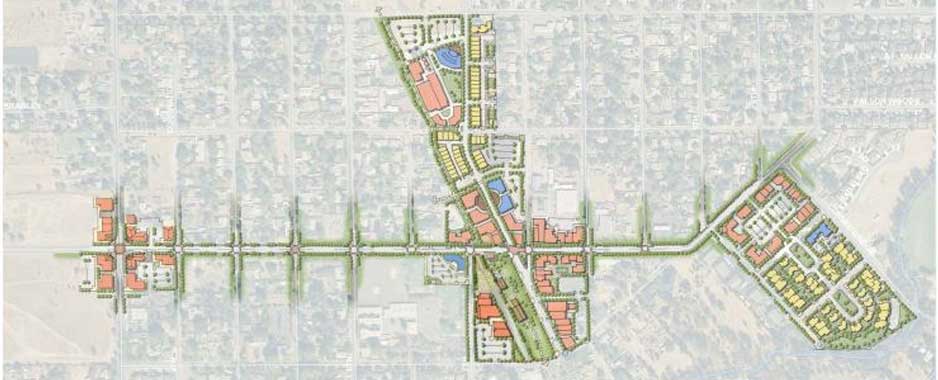(This is a reprint from the Sacramento Business Journal, Sep 18, 2005 by Stephanie Flores)
Residents of Rio Linda-Elverta cherish their family homes on large lots, equestrian charm and country flavor. So they’ll do what they can to preserve the rural setting, even if it means becoming a city.
Members of the Rio Linda-Elverta Incorporation Committee say they’re leaning in that direction because urbanization is closing in, as developments continue to sprout and annexations loom in neighboring communities.
The committee isn’t anti-growth, members say, they just don’t want to live in a hastily planned community.
“There are going to be changes, and we have a choice,” said Judy Garcia, head of the Rio Linda/Elverta Chamber of Commerce and incorporation committee member. “We can keep control of our fate here, or let someone else take care of it.”
The area has only one long-planned development in the pipeline, with nothing new planned, and so far has dodged strip-mall corridors like those in neighboring Natomas to the southwest and Roseville to the north. The most immediate fears are the approval of an annexation by the city of Sacramento of more than 1,400 acres in the southern “panhandle” of the parks district, and plans to develop the rural area west of East Levee Road with strip malls and what they consider to be poorly planned traffic patterns. Rice is grown there now, but thoroughfares that would be used to reach this would-be developed area run through the middle of Rio Linda.
The lack of new developments in Rio Linda-Elverta stems from a moratorium on commercial building, which was lifted last year when Sacramento County adopted a controversial affordable-housing ordinance. Since then, a shopping center has opened and mixed-use Elverta Villages, slated for nearly 5,000 residential units, inches toward a complete application, but neither of these projects is new to residents.
Annexation efforts: So far, members of the eight-person incorporation committee have raised half the money needed to complete the $30,000 feasibility study to examine whether Rio Linda-Elverta has the tax base to support cityhood. The study uses the parks and recreation district as possible city boundaries, but the city of Sacramento is already chipping at that plan.
The incorporation efforts race against time, as Sacramento is looking to annex a southern panhandle portion of the parks and recreation district, incorporation spokesman Bob Bastian said. If the city annexes this area, which extends south of Elkhorn Boulevard and is already sandwiched between Sacramento city limits, then the move would swallow a significant chunk of Rio Linda’s tax base and likelihood of becoming a city.
“Annexation is a major issue with the park district, which has about 40 percent of its revenue at stake if the city of Sacramento annexes the panhandle,” states the incorporating committee’s Web site.
Hal Morris has lived in Rio Linda for 16 years and serves on boards for the water district, planning council and incorporation committee.
“Another big concern here is what if the city keeps going north (of North Natomas),” Morris said. “What’s to stop them from going inward to Elverta and Antelope?”
If the city annexed north Sacramento County, then Rio Linda would be surrounded by city limits. The city of Sacramento has expressed interest in annexing up to the county line, with Highway 99 to the east and stopping short of inhabited Rio Linda to the west. But Rio Linda residents say it’s their turf. For now, the undeveloped land is within the Rio Linda-Elverta parks department boundaries, and included in the feasibility study. However, the area was part of the Natomas Planning Advisory Council, not Rio Linda’s council.
So far, all annexation issues have been at the request of the neighborhood or developer, said Liz Brenner, spokeswoman for the Sacramento city manager’s office.
Country charm, city amenities: The incorporation committee is made up of eight members, but spokesperson Bastian says 70 percent of Rio Linda residents are in favor of incorporating. Another 20 percent are on the fence and 10 percent don’t want cityhood or don’t care. The committee is composed of prominent individuals in the neighborhood, such as the head of the Chamber of Commerce, head of the historical society, and residents who sit on the boards for water, parks, school and planning units.
Though some folks move to Rio Linda for the rural atmosphere, many families have lived there for generations. Native Bastian lives in the house his grandparents built in 1920. His daughter lives in the ranch house next door.
“You have to embrace growth, but let’s do it in a way that’s intelligent,” Bastian said. He cited water issues and traffic patterns as concerns. Residents have also expressed that they don’t want a power plant, he says, but would welcome quality homes on large lots.
Though the immediate threat of development looms west of existing Rio Linda, residents fear Elkhorn Boulevard and Elverta Road could widen twofold and threefold in some places and become major arteries fit for a traffic jam. Eventually, development could move inward to existing Rio Linda, but County Supervisor Roger Dickinson downplayed that threat.
There might be a time when keeping the country feel will be impractical under the pressure of surrounding growth, Dickinson said, but “we’re not there yet.” Dickinson emphasized he’s not predicting there ever would be a time, but if there was, “the issue wouldn’t come to a head until the next decade or so.
“From my standpoint,” he said, “I’m trying to look at what the majority of people want to do and what will work.”
Rio Linda resident Morris says Natomas was supposed to take longer to build out, but went up in a fraction of the expected time.
Snapshot of what’s going on now: Splitting parcels has fueled most of the residential movement in past years. Around half the approvals by the Rio Linda-Elverta Community Planning Advisory Council stem from either people who want to put small homes on their lots for aging parents or temporarily add a mobile home for a family member with medical need, the council’s Morris said. Rio Linda-Elverta is about history and family, he added.
“Some of these lots have three and four generations living on them,” said Morris, who lives next door to his mother.
This year a shopping center anchored by Food Source opened, marking the first new shopping center there in decades. Residents appear receptive. The Food Source has been a good neighbor, Bastian says.
“They’ve joined the Chamber of Commerce and helped local schools with fund raisers,” Bastian said. “They’ve even donated dented cans to the Food Closet at Methodist Church.”
Elverta specific plan: The mixed-use development Elverta Villages is slated for the northeast corner of Elverta. Depending on who is asked, some say the project has been in the works for 15 years or more. The 1,700-acre project would add nearly 5,000 dwelling units, doubling the water meters for the Rio Linda-Elverta Community Water District.
John Hodgson represents a group of landowners for more than half the proposed area. He’s been involved with the project for 10 years.
“At this time this project was at the edge of civilization. Now it’s an infill project,” said Hodgson, citing the growth surrounding Rio Linda-Elverta in Natomas, as well as Placer and Sutter counties.
Elverta Villages will allow residents to live on larger lots, Dickinson says, but also to enjoy neighborhood-serving retail. He’d like to see the project approved by the Board of Supervisors by early next year. The application is still being reviewed by the county.
There is a general sentiment among residents that higher-density housing isn’t wanted in that area, said Garcia, the chamber head. It’s difficult to have open acreage around you one day, then houses backing up to you the next, she said.
“I think a lot of people have had to swallow it,” she said. “But it’s pretty much a done deal and there’s not much we can do about it now.”
The stringent affordable-housing ordinance put the plan back a year, Hodgson said. It finally passed county staff review in August and joined the rest of the application in environmental review, he says.
The proposed town center would be located on the corner of Elverta Road and 16th Street. Resident Bastian says though the area is zoned for the mixed-use development, it’s important to plan the traffic pattern in a way that makes sense and develop the village concept. He said neighboring Natomas Marketplace, which many Rio Linda residents use, is an example of poor traffic patterns and one the community should not emulate.














